Republican Tax Cuts May Actually Accelerate Flow of Jobs Overseas


The new tax cuts President Trump and the GOP have been trumpeting were in part designed – or at least the public was told – they would make America great again by encouraging companies to bring back manufacturing jobs to cities and towns across the country.
But even before the Tax Cut and Jobs Act (TCJA) become law, critics said the way it was drafted could actually encourage businesses to send more jobs abroad.
We heard time and again that the previous U.S. corporate tax rate was 35 percent, much higher than what companies pay in most industrialized countries. That argument, however, becomes complicated once one drifts into the weeds of U.S. tax policy. For companies with overseas operations, that 35 percent rate only applied when profits generated by U.S. firms’ foreign subsidiaries were repatriated, such as in the form of a dividend. Companies simply had ducked that high rate by postponing those dividends again and again – which is one reason most estimates suggested companies over the years had socked away close to $3 trillion in cash overseas.
As House and Senate leaders moved along their versions of the tax cut bill through Capitol Hill, the response of congressional Republicans became clear: revamp how corporations were taxed on foreign income. GOP leaders settled on a territorial approach, i.e., one that would not apply a universal tax rate on what American firms would earn on foreign soil. “Unfortunately, the bills’ approach could still encourage production and profits to be shifted abroad,” wrote Steven Rosenthal for the non-partisan Tax Policy Center as the bill was taking shape in Congress.
Ultimately, the law imposed a tax on overseas subsidiaries of 10.5 percent, which is half the rate, 21 percent, taxed on income generated on U.S. soil. Companies will score a credit for up to 80 percent of taxes paid to foreign countries, but if that amount is less than 10.5 percent of any income earned abroad, firms then owe the U.S. federal government a tax bill.
Therein lies the problem. There is little incentive for companies to invest in manufacturing in the U.S. if they will be taxed up to twice amount on those profits generated here as they would pay on goods made in overseas factories.
For a small company making a specialized product requiring highly skilled labor, it is doubtful this new tax law would encourage those companies to quickly flee U.S. shores. After all, there are risks moving abroad, including political instability, corruption, logistics and the costs of construction and training workers in a foreign country. Big companies can take those risks; your smaller outfits cannot.
Nevertheless, for high-value items such as automobiles, that difference in tax rates could persuade those companies to invest in factories outside the U.S.
Furthermore, as Rosenthal pointed out, tangible returns, which apply to investments such as factory equipment, would not be subjected to the higher U.S. tax rates. The result would nudge more companies to either move more manufacturing jobs abroad, or just to decide to keep those operations overseas in the first place.
Other analysts who have looked at the new tax law closely agree that the long-term impact will be that more factories owned by U.S. companies will open overseas. “While companies will now have to pay some tax in most cases, wherever they operate, they will pay much less on what they make abroad than at home,” concluded the New York Times.
For those striving to improve supply chain sustainability worldwide, they lose under this tax cut. Companies will continue to navigate their products through a maze of suppliers, which means there will still be several problems dogging many manufacturers: products made in regions with lax environmental laws; potential labor and human rights violations; and of course, the carbon footprint of hauling goods across oceans or by airplane.
As a side note, Republican’s claims that taxes will now be able to be paid via a post card have been quickly laughed off and debunked. But if you plan on sending post cards to U.S. owned factories in the future, be sure to buy the higher-priced stamp, as you will be mailing them abroad.
Image credit: Ray Dumas/Flickr
Ford Called Out for Undermining Fuel Standards While Promoting Sustainability
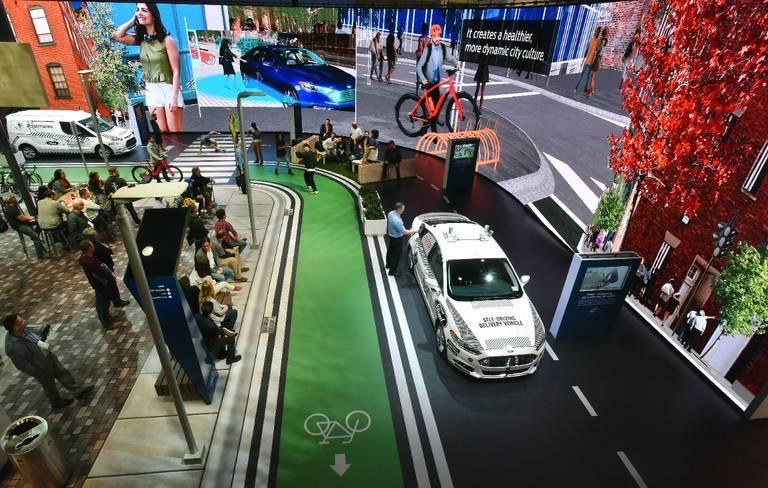

Yesterday at the Consumer Electronics Show in Las Vegas, activists from Public Citizen and Greenpeace attempted to give Ford Motor Company CEO Jim Hackett a “2018 Hypocrisy Award.” Both NGOs complain that although Ford promotes a positive message when it comes to environmental sustainability, its membership in the Alliance of Automobile Manufacturers and “working with the Trump administration to undermine fuel efficiency and greenhouse gas emissions standards” demonstrate otherwise.
Public Citizen and Greenpeace have been critical of reports that the Alliance and other automobile trade groups had pushed the Environmental Protection Agency (EPA) to roll back fuel efficiency standards for cars and light trucks manufactured between 2022 and 2025.
“Despite how much Ford tries, there’s no disguising its backward push to stymie innovation and bring consumers pollution-belching, pocketbook-draining guzzlers,” said Madeline Page, campaign coordinator with Public Citizen. “In September, we called on Ford to back up its sustainability claims with action by no longer participating in efforts by the Alliance to undo the clean car standards. But since then, Ford’s lobbyists have met with the Trump administration and even testified before Congress to roll back the safeguards.”
Public Citizen said photos of the attempt to give Hackett the back-handed award will be posted online, though as of press time the only image publicly available is a low-resolution graphic explaining what the award means.
When TriplePundit asked Ford to comment, the company either refused to take the bait or skirted the issue, depending on one’s perspective. Ford also highlighted the work it is doing to develop technologies to make progress on both road safety and the environment.
“We believe global climate change is real, and we are committed to reducing emissions from our vehicles and our factories. There is also an important opportunity to further reduce CO2 emissions as we move into a world of smart vehicles and smart environments,” said a Ford spokesperson. “These new mobility solutions will make a significant positive impact on the environment by taking vehicles off of roads while helping people move more safely, confidently and freely. We remain focused on continued progress for the environment.”
Another Ford representative expressed surprise to 3p that Ford was being singled out, when every automobile company with manufacturing operations in the U.S. is represented equally by the Alliance.
In a series of public statements, the Alliance says its emphasis is on harmonizing fuel economy regulations issued by both the EPA and National Highway Safety Transportation Administration (NHSTA).
“Automakers could comply with requirements under the EPA program and still face fines from NHTSA for the same product portfolio because of the different structure of the CAFE [corporate average fuel economy] program,” the Alliance said in an October 2017 public statement.
The trade group in recent months has been vocal in its support of electric vehicle and fuel cell tax credits; it has also pushed for a regulatory environment that will be more conducive for further research and testing of autonomous vehicles.
But Greenpeace and Public Citizen see the Alliance and its member companies not as innovators, but as lobbyists trying to undo climate efforts.
“At this critical moment for the climate, we need companies like Ford to do a whole lot more than pay lip-service to the public – we need them to lead,” said Natalie Nava, a project leader at Greenpeace USA.
Image credit: Ford
Eco-Ethical Fashion: Sustainable Trends to Watch
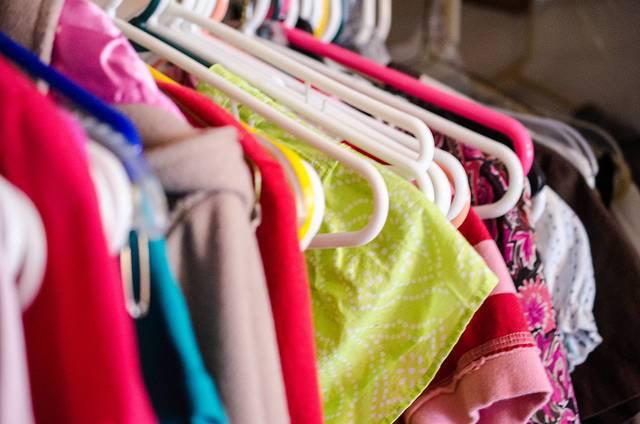

By Christine Reppa
Eco-ethical fashion. Never heard the term? That’s because it doesn’t exist. Yet.
Farm-to-table restaurants, electric cars, eco-travel—there are sustainable trends hitting every industry. I love it. What I don’t love is that it’s taken so long to hit my industry…the fashion industry. The good news? We’re seeing sparks of change.
The (many) challenges of eco-ethical fashion:
Many big brands and retailers chase trends and even promote fast fashion as a good thing. In my opinion, fast fashion is the root of the issue that starves the industry of the ability to go green and consistently adopt ethical practices. Buy a shirt for $7, use it for one season, toss it, start over. Yikes! It’s so wasteful and so unnecessary. There are many high-quality clothing brands available these days. I have clothes in my closet from 5-plus years ago still going strong. But I had to pay for that quality and admittedly it was a hard pill to swallow at the time of purchase.
Prices are about as cutthroat as they come in the fashion industry. The general population isn’t interested in paying more than $50 for a pair of jeans. The cheapest option usually wins! As a kid I remember begging my mom for jeans that were at least $50. That was 20 years ago. Have you ever heard of durable consumer good whose price did not increase over time? Me either. Except for that top you’re wearing.
I own a clothing company. I know these issues and I still have trouble paying $45 for a top when I know I can buy one that looks similar for $8 at Target. On the other hand, I’ve essentially cut cheap fast food out of my diet. I fork over way more cash for healthier and less wasteful restaurants. Why? Because my health is a huge priority to me. I can see, feel, and taste the benefits to paying more. It’s a little harder to convince someone that when they pay for an ethically and/or sustainably made cardigan they're doing themselves and the world a favor.
So yes, there are major challenges for the fashion industry to get on board with sustainability. Despite the challenges, some incredible things are happening.
Here are a few trends to keep an eye on.
Sustainable fabrics
Not all fabrics are created equally green. In fact, most fabrics leave a large footprint in their wake from creation, to dye, to shipping across the globe, to landfill. Even fabrics made from materials like cotton aren’t always the eco-friendly choice due to the enormous amount of water, pesticides, and land that cotton needs to grow. On the other hand, cotton can be an ideal choice because it is naturally bio-degradable. If you’re going with cotton, go for organic cotton. You can also look for fabrics made from bamboo, modal, tencel, wool, silk, linen, hemp and recycled materials. But be wary, even these fabrics aren’t perfect.
Repurposing fabrics
As the name suggests, repurposing fabric is using material for a purpose other than for what it was originally intended. Unused fabric lots can pop up for a variety of reasons, but often are a result of large-scale clothing producers discarding leftover lots of fabric that are too small for bigger production runs. Smaller-batch clothing companies like Noya can repurpose these small lots. This is where I love to swoop in and grab the fabric before it gets tossed in a landfill.
Refurbishing or repairing products
Patagonia gives tutorials on their website on how to fix common issues with well-used gear and gives customers the option to sell and purchase used gear. They also pledge to never let their products see a landfill through their Reuse and Recycle program.
Fair wages, safe facilities, and ethical practices
Remember that cutthroat pricing I mentioned earlier? Move your production to a facility with fast-turnaround and low labor costs and prices plummet, but it’s often at a social and moral cost. Human rights issues aren’t going away until regulations are in place. That will likely mean higher prices for consumers and transparency for retailers.
USA or locally made
No matter what your political views are on shopping American made, if you live in the United States, “Made in the USA” is often a greener and more ethical choice. The USA has higher standards for working conditions and pay that are also more likely to be enforced. As for the environment, there are tons of resources used to ship items across the globe. For instance, a typical piece at Noya will be sampled at least three times before we move to the next step of production, the sizing stage. After sizing is sorted we move to a full production run. Each stage requires fabrics, patterns, and other materials shipped. There are a minimum of 16 shipments completed for each item before the product ever arrives on a consumer’s doorstep. Imagine the difference between shipping from across the globe to shipping within the United States (or even better, within a particular state or city). It adds up. Fast.
Proactive partnerships
Every industry creates a carbon footprint. Our best bet is to reduce how much we consume as much as possible and to proactively support our environment. Companies that support environmental causes are proactively focused. The best way to encourage these partnerships is to support companies who have them. We chose to partner with Trees For the Future to help alleviate our inevitable environmental footprint despite our other efforts to be green. For every product you purchase at Noya, we plant 10 trees.
What else can you do?
Learn more about where your clothes come from. Spread awareness by sharing articles like this and the ones mentioned here. Demand more of the brands where you shop. Shop higher quality and shop less.
Eco-ethical fashion is a bit of a dream right now. But in the words of the documentary The True Cost, “My god, we can do better than this.”
Christine Reppa is founder of Noya, activewear made for women by women. She is an environmentalist, women’s rights activist, yogi, and adventurer. You can read more of her musings at the blog on her website noyayoga.com.
A New Record for Climate Disasters – and a Wake-up Call for Insurers
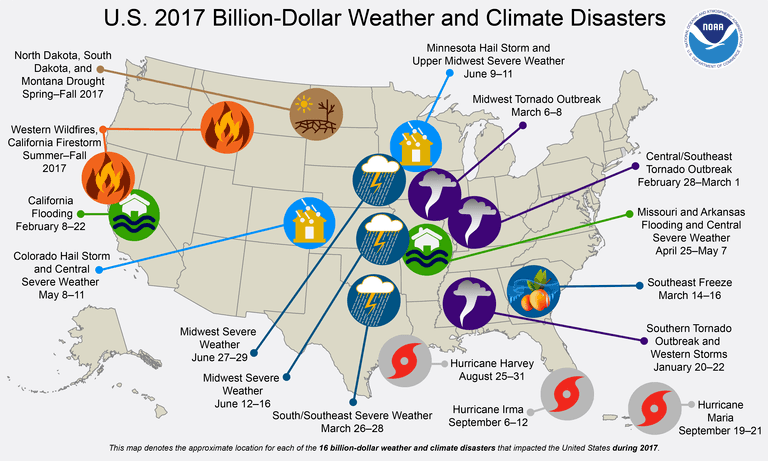

As announced in a report issued this week by the National Oceanic and Atmospheric Administration (NOAA), 2017 was a historic year, and not at all in a good way. Climate-related disasters, including the hurricanes and wildfires that dominated headlines during late 2017, exceeded $300 billion in costs last year – a new annual U.S. record. In fact, last year’s weather events shattered the previous record dating back to 2005, when the likes of Hurricanes Katrina and Rita added up to a total of $214.8 billion in damages.
In addition to the California wildfires and Hurricanes Harvey, Maria and Irma, NOAA’s accounting also included droughts in the Dakotas and Montana; flooding in Missouri and Arkansas; and episodes of severe weather ranging from the Great Plains to the U.S. Southwest.
When looking back over the past few decades, NOAA estimates that 215 disasters costing at least $1 billion have socked the U.S. since 1980, resulting in as much as $1.2 trillion in damages. Citizens can agree to disagree whether man-made climate change has had a role in these extreme weather events until everyone is blue in the face, but the reality is that these trends do not appear likely to reverse themselves at any time soon.
The daunting numbers NOAA released this week should be a loud wake-up call for more insurance companies, which in general have long overlooked the potential risks that climate change could have on their portfolios. Observers of this sector say that insurers must acknowledge the fact that weather-related events will cause harm to more homes and businesses, not to mention having an adverse effect on human health in the coming years.
Worldwide, insurers paid out an all-time high of $135 billion in 2017 due to weather-related disasters, according to the Washington Post.
From the point of view of the sustainability nonprofit Ceres, insurance companies should become more sensitive about risk exposure more than ever before. While more insurers in recent years have incorporated climate change risks into their long-term strategic planning, Ceres’ researchers insist that many of these companies could be in for a huge shock sooner than expected.
"The sheer number of Americans affected by extreme weather this past year, and the broad geographical spread of those disasters, means that national insurance brands may not be able to meaningfully reduce their risk exposures without dropping many customers from their rolls and potentially sacrificing crucial market share,” said Cynthia McHale, director of Insurance at Ceres, in an emailed statement to TriplePundit. “And this is an approach that policyholders, regulators, and other stakeholders would likely strongly object to.”
McHale also mentioned that when considering that the insurance sector is a data-driven industry, the sheer numbers NOAA has presented should be hard for the sector to ignore. More of these companies, in fact, should ensure that their future policy decisions related to climate resilience and mitigation use the best available science. Furthermore, insurers could also help reduce future climate change impacts by beginning to move their investment portfolios toward assets that are low-carbon and more sustainable.
“We hope the terrible destruction of 2017 will mark a turning point for the American insurance industry,” said McHale. “Many of the largest and most recognized brands must warn their customers about the risks of climate-driven extreme weather and the steps they can take to prepare.”
Image credit: NOAA
World Leaders Ban Arctic Fishing in Favor of More Environmental Research
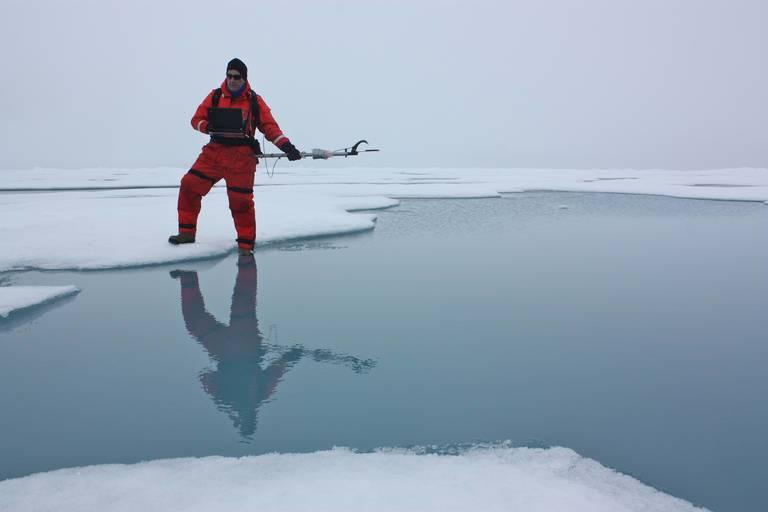

Aquaculture -- what is commonly referred to as domestic fish farming -- is a booming business these days. Still, it hasn't lessened the warnings from scientists that we may be rapidly over-fishing the world's wild fish stocks.
According to the Food and Agriculture Organization, the world's appetite for seafood has been increasing in recent years, encouraged by better technology and larger commercial fishing fleets. In 2014 commercial fleets recorded capturing 93.4 million tons of seafood, more than double what fisheries reported a mere four decades ago.
But commercial fishing is also receiving a boost from climate change, which has allowed fleets to access waters in Arctic and Antarctic regions that were once considered inaccessible under the regions' thick ice, which is now melting.
That's alarmed scientists, many of whom have been calling for a moratorium on Arctic fishing in recent years. In 2012, more than 2,000 scientists wrote to the leaders of Arctic countries and urged them to craft an agreement to prevent the Arctic waters from being over-fished. They called for a global agreement that would include guidelines "based on sound scientific and precautionary principles," that would start "with a catch level of zero as a reflection of the state of understanding of the fisheries ecology of the region."
The first comprehensive Arctic fishing ban
In October last year, with the Oslo Accord in place to govern fishing in the Atlantic high seas, nine scientists renewed the call again, this time urging global leaders to sign an agreement temporarily banning Arctic fishing.
But the scientists weren't just calling for a moratorium on fishing in the Central Arctic Ocean. They wanted data, lots of data that would inform governments, fisheries and other stakeholders about the health and resources of the area that for centuries had remained a "terra incognita" for commercial fisheries.
And most importantly, they wanted that information to take precedence over commercial fishing schedules.
Questions still abound about what is in the Arctic Ocean, and how much of its fish stocks would be safe to harvest, reports Canada's Department of Fisheries and Oceans.
"We simply don't have that information," remarked Nadia Bouffard, who serves as the department's director general as well as the head of the Canadian delegation that helped secure the Arctic fishing ban. "We did pose that question to our scientists. They reported to us is that there is no fish-specific information available for the high seas" she told National Geographic.
So in November 2017 ten new signatories joined the agreement, cementing the first broad-based effort to slow commercial fishing in the Arctic. The agreement was given conditional approval by nine countries and the 28-members of the European Union. The United States, Canada, China and Japan, all large players in the global commercial fishing industry, endorsed the concept.
Under the agreement there will be no commercial fishing in the 1.1 square mile/2.8 kilometer zone at the center of the Arctic Ocean for 16 years. The zone, which lies between Russia, Greenland, the U.S. and Canada, is not governed by international law. According to the agreement, the ban will automatically renew for another five years unless one of the signatories objects.
The agreement, which has not been formally signed, is in the final stages of preparation, which includes translating it in to each of the members' states native languages, and securing the final 'go-ahead' from each government.
Better ice breakers, better access to Arctic waters
But while the new agreement promotes more environmental research in the area, it also may increase access for commercial Arctic fishing when the ban ends in 2034.
In order for scientists to study the area, nations and research teams will need to invest in better ice-breaking vessels. At the present, the U.S. only has two ice breakers that can plow through the Arctic's thick crusts of ice and even those vessels, U.S. Coast Guard Commandant Robert Papal told Congress in 2011, were badly in need of replacement. He repeated his call for more funding in subsequent years, pointing out that the U.S. Coast Guard budget was woefully under-financed for the task, especially if it wanted to lead research teams into Arctic regions.
In February 2017 the U.S. signed a $20 million contract to explore possible designs for new ice breakers. The study is the first step to determining what -- and how much money -- the Coast Guard would need if it were to go shopping for a state-of-the-art vessel. The cost of a new ice breaker can run upwards of a $1 billion.
But the U.S. Coast Guard will also be up against another challenge: China. Since 2015 the Chinese People's Liberation Army's Navy has been steadily increasing its fleet of ice breakers, readying for the task of navigating the Arctic's formidable waters. Since China's fishing fleets also have expressed interest in fishing opportunities in the region, the new fleet of ice breakers would likely serve double-duty in future years.
Arctic fishing or Arctic oil?
Of course, Arctic fishing is a relatively small interest for China when compared to its present focus in the region, which involves tapping into the Russian Arctic waters for oil. For the last few years, the Russian and Chinese companies have been working side-by-side to expand Russia's access to Arctic oil in a region known as the Kara Sea, which sits just northwest of the zone that would be placed off-limits. Expanding China's ice breaking capabilities means more accessibility for a technology it's already beginning to capitalize on. It may also benefit Russia, which is quickly depleting its onshore reserves.
Canada could also have an interest in expanding its oil reserves, given its waning success in the oil sands market and its struggle to develop pipelines across Canadian and U.S. regions.
But for now, scientists are calling the international agreement a win-win for the environment: a ban against drilling in the vast Arctic Ocean, and the potential for unfettered research in one of the world's last primal regions. As researchers have already found, studying the world's smallest ocean may unlock vast secrets, including how to better manage the effects of climate change.
Flickr images: NASA Goddard Space Flight Center; NASA Goddard Space Flight Center; NASA Goddard Space Flight Center
Activist Investors Urge Apple to Help Fight Kids’ Addiction to Smartphones
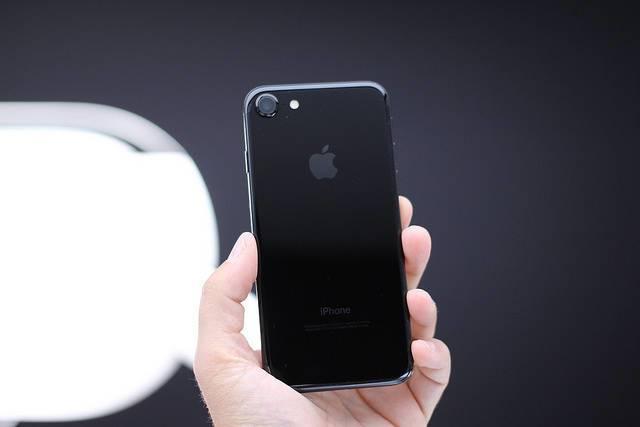

A decade ago, an ongoing fear of the proliferation of cell phones was that they could possibly have a link to brain cancer. Scientific studies have found that there is scant evidence of any ties between cell phone use and cancer – but in any event, with smartphones now the norm, talking is the last thing most of us do on our iPhones or Android devices.
And therein lies the problem, according to two activist investors who reportedly own approximately $2 billion in Apple shares.
JANA Partners, a hedge fund, and the California State Teachers’ Retirement System (CALSTRS) recently co-wrote an open letter to Apple’s board of directors. In it, both organizations urged Apple to do more to counter children’s addition to smartphones.
The letter showcased what the authors say is growing evidence that excessive smartphone use has ties to behavioral problems, depression and anxiety.
As anyone who is a parent can testify, limiting kids’ time on screen can be a daily battle.
“94 percent of parents have taken some action to manage their child’s technology use, but it is both unrealistic and a poor long-term business strategy to ask parents to fight this battle alone,” wrote JANA’s Barry Rosenstein and CALSTRS’ Anne Sheehan. “Imagine the goodwill Apple can generate with parents by partnering with them in this effort and with the next generation of customers by offering their parents more options to protect their health and well-being.”
Rosenstein and Sheehan recommended that Apple embark on a plan to raise awareness about the risks of smartphone addiction. Such steps would include launching a committee of child development experts to study this problem; offering the company’s own vast amounts of data to assist more research initiatives; enabling technologies that can make it easier to limit what apps children can access on a smartphone; educating parents about how they can take on this challenge; and assigning a high-level executive to release annual progress reports on this issue.
In an interview with CNBC yesterday, Rosenstein, along with a partner at JANA, Charles Penner, lauded Apple’s success and innovation over the years. But they also suggested the company should be more proactive about smartphone addition to ensure their leadership in the marketplace. “There’s no question that we need to be responsive to children’s needs and children’s activities. And there’s lots of research that has indicated that excessive usage of smartphones is damaging these kids,” Rosenstein said.
Apple has maintained repeatedly that it has been at the forefront of the technology sector by insuring its products include parental control features.
But Rosenstein and Penner insisted that Apple’s leadership in the technology sector, together with its reputation for innovation, are exactly why JANA and CALSTRS have focused on the company. "Apple is the smartest place to start. They are the leader in the industry and what they do can send a powerful message to the rest of the industry," Penner explained during CNBC’s “Fast Money Halftime Report.”
Penner also reiterated that the issue was not about who or what are at fault. He made the analogy that while no one can blame Apple for climate change, the company has at times done its part to help solve that problem. To that end, when it comes to tackling smartphone addiction, Penner said the company could be more proactive by making those parental controls more sophisticated and front-and-center than the options currently available on its products. A binary on-or-off option is not enough, as some research has inferred limited use of smartphones can actually be beneficial for children, if curtailed to about an hour a day.
From Penner’s point of view, while the controls on Apple devices may appear to be good, they worked best in a 2008 world. “But since 2008, a lot has changed. There’s more research out there, and we think that the controls . . . can be brought up to date to align with the research and developments in technology.”
Image credit: Maurizio Pesce/Flickr
On Trump's Watch, FERC Deals a Death Blow to U.S. Coal Industry


President Trump rolled into the Oval Office with an emotional appeal to coal miners, their families, their communities, and all who allied their interests with the survival of the U.S. coal industry. Those promises rang hollow all throughout the president's first year in office. His second year is off to a devastating start with no relief in sight.
The latest blow came from the Federal Energy Regulatory Commission. On Monday, the agency unanimously decided not to accommodate the Energy Department's request to protect aging coal power plants. The denial stings all the more because the five-member commission is dominated by Trump appointees, four votes to one.
A long, slow death for the U.S. coal industry
To be clear, U.S. coal jobs have been at risk ever since the trend toward mechanization began to accelerate in the 1920s. Pick-and-shovel labor has been largely replaced by machines and other labor-saving practices like mountaintop coal removal. Other internal pressures are also at play. The recently announced closure of Pennsylvania's 4 West Mine demonstrates why some mines can't compete with others, even in the same area.
As for external forces, the U.S. coal industry dominated power generation in the U.S. for decades, but the rise of hydropower and nuclear energy demonstrated that coal does not have a monopoly on large, centralized power plants.
The real trouble arose when the Bush administration created a loophole in federal water safety regulations. That allowed the shale gas boom to take off. As coal power plants aged out, the ranks of natural gas powered plants swelled.
Renewable energy and energy efficiency both made considerable progress during the Obama administration. That also helped to tamp down demand for new power plants.
Together, these three trends -- natural gas, renewables and energy efficiency -- combined in a perfect storm for coal power generation.
Efforts to improve grid resiliency are reinforcing the trend away from coal. For example, after the "polar vortex" episodes of 2014, grid operators in New England opted to rely on dual fuel gas-oil generators rather than build new coal or nuclear power plants.
Though not an environmentally optimal solution, the strategy proved effective. The plants withstood the recent "cyclone bomb" storm and below-normal cold snap of the past week.
The advent of low cost natural gas and renewables also exposed critical public health risks and environmental hazards in local communities from the coal power generation sector, over air pollution and ash disposal issues.
Finally, the public consensus on global warming is beginning to coalesce around the facts, driving demand for clean power at the consumer end.
President Obama's much-demonized Clean Power Plan has played little if any role in this energy mix sea change. Its announcement in 2015 helped policymakers lay plans for a low carbon future, but it never went into effect. The Clean Power Plan was hung up in court shortly after its announcement, and it is currently in limbo.
Trump dangles a lifeline for coal -- then yanks it
Monday's FERC decision came about after the Energy Department requested a new rate structure purported to ensure grid reliability by favoring plants that have a 90 day supply of fuel in storage. While this sounds good in theory, it's actually an offhand effort to prop up coal and nuclear energy since these two forms of energy are the only two that meet the 90 day guidelines. Sun and wind don't count, and neither does natural gas, since it would be dangerous to keep a 90-day supply on hand.
It was never clear how serious Energy Secretary Rick Perry was about the reliability proposal. He seemed well aware that it was a political hot potato, because it would force consumers to pay higher rates for electricity even when less expensive alternatives are available.
In addition, the proposal was a stark contrast to the Energy Department's ongoing programs. With the enthusiastic backing of Perry, the sprawling agency has been promoting wind, solar and other renewables non-stop all year -- and that includes a major grid initiative aimed at loosening coal's grip on U.S. power generation.
It's also worth noting that although FERC is an independent commission, it operates under the purview of the Energy Department.
The death blow was a mercifully quick, as described in the commission's official announcement:
The Federal Energy Regulatory Commission (FERC) today terminated the proceeding it initiated (Docket No. RM18-1-000) to consider the Department of Energy’s September 29 proposal on grid reliability and resilience pricing.
Ouch!
In the same announcement, FERC essentially put the Energy Department in the timeout corner by directing commissioners to seek input from grid operators directly:
Today’s action directs operators of the regional wholesale power markets to provide information as to whether FERC and the markets need to take additional action on resilience of the bulk power system. The goals of this proceeding are to develop a common understanding among the Commission, industry and others of what resilience of the bulk power system means and requires; to understand how each regional transmission organization and independent system operator assesses resilience in its geographic footprint...
That order does not spell relief for coal. U.S. grid operators have been essential stakeholders in the Energy Department's ongoing grid modernization initiatives. They are already embedded in the clean energy transition and they are not likely to switch gears.
In fact, the FERC order will provide grid operators with a high profile platform to advocate for renewable energy, energy storage, smart technology and other features of the grid of the future.
With friends like these...
By all appearances, the FERC decision was a relief to experts at the Department of Energy, and even to Trump's own Energy Secretary.
Within hours of the FERC decision, Perry was right back at the real business of grid modernization. On Monday, the Energy Department's National Renewable Energy Laboratory launched a major new electrification study front-loaded in favor of clean power.
Perry, of course, was appointed to his position by President Trump, and the FERC vote also came from Trump appointees.
With friends like these...
Photo: via US Department of Energy.
Financing the SDGs


The green bond market is worth $100bn, but $1trn is needed to fund the low-energy transition by 2020. Ethical Corporation recently commissioned a briefing into the growing state of green finance, which goes into depth on the important role it has to play in tackling climate change and assesses what it will take to move the global financial system on to a more sustainable footing.
Click here to download the complimentary briefing
Key themes of the briefing include:
- What needs to be done for green finance to go mainstream
- How fintech is financing the SDGs
- Innovating to make an impact – green finance disruptors
- Turning risk into climate rewards for developing countries
- The role forests have to play in limiting climate change and the lack of current funding to end deforestation
Click here to download the complimentary briefing
Contact:
Ed Long
Project Director
Ethical Corporation
+44 (0) 20 7375 7188
LIVARI: How 3 Women are Leading the New Sustainable Fashion Movement


How many pairs of jeans do you own? How many t-shirts? How many pairs of shoes?
A $3 trillion dollar industry employing roughly 60 million people, the fashion industry accounts for 2 percent of the world’s GDP and supports many adjacent industries, including agriculture, petroleum, mining and construction. It’s also an industry that historically hasn’t been very earth friendly. Boston Consulting Group estimates that the fashion industry is the fifth most polluting industry in the world. LIVARI, a new zero-waste, women-led, women-designed label has entered the fashion scene and is looking to change this one tonne of carbon pollution at a time.
Launched at New York Fashion Week in the fall of 2017, the brand is a collaboration created by actress and environmental activist Alysia Reiner, celebrity stylist Claudine DeSola, and designer and Women’s March organizer Tabitha St. Bernard-Jacobs. The trio is committed to using their platform to promote social issues. TriplePundit spoke with Reiner about the brand’s commitment and three focus areas - environmentalism, women's rights, and activism - describing how the ladies met. “Claudine introduced Tabitha and I because she knew we both were part of the Women's March and had a deep passion for both the environment and women's rights. I like to say under our current administration both women and the environment have become endangered species and we collaborated to use the art of fashion as a form of activism,” she said.
The women behind LIVARI understand that to be a good corporate citizen requires thoughtful partnership. It was this thinking that inspired the brand to partner with the Bay Area-based non-profit Cool Effect. Cool Effect allows individuals to create a tangible impact on climate change through a digital platform, providing consistent funding to the highest-quality carbon-reducing projects around the world. Since their launch, LIVARIi has retired nearly 50 tonnes of carbon pollution with Cool Effect to achieve net zero emissions. Reiner explains why this was a critical move for the new brand, “In our world today, we feel there is no choice. Our resources are limited and we want to be an example of a choice to make beautiful wearable art, but do so wisely, consciously and ethically.”
The partnership wasn’t the first time Reiner had been involved in with Cool Effect’s mission. “I’ve been working with Cool Effect for over a year now since I fell in love with a snowman last year and tried to save it (as part of the non-profit organization’s #SaveOurSnowmen campaign).”
Since September, LIVARI has supported Cool Effect through the Backbone T-shirt – for every purchase, a portion of the proceeds go directly to Cool Effect’s Bagepalli Productive Poo project to reduce one tonne of carbon pollution. The Bagepalli Productive Poo project is a biogas digester project in Bagepalli, India, which converts cow dung into clean biogas. This project contributes to a reduction in carbon pollution, air pollution, and water pollution while also helping with waste management, soil fertility, and forest conservation.
The fashion industry is changing for the better. More companies are beginning to see how consumer voices are demanding brands to speak up and out about social issues. Reiner explains why this is the right time for a company like LIVARI, “I think we all feel like we are in a time where making a positive change in the world is deeply important. People are looking more deeply into how things are made, on a socially conscious and environmental level. LIVARI is a brand that is deeply committed to both.”
The company is just getting started. LIVARI’s next product will support the #normalizebreastfeeding movement. “Our next launch will be our breastfeeding dress for Mother’s Day. I am so excited! It is the first dress I have ever seen that you can wear to the office or a party. It is super chic, super comfortable, and awesome for new moms.”
LIVARI is proving one garment at a time that the fashion industry can serve as a vehicle to drive social issues and awareness. If you would like to read more about how the fashion industry is doing with sustainability metrics check out the Pulse of the Fashion Industry Report produced by the Copenhagen Fashion Summit and the Boston Consulting Group.
Image credit:Vincent Roazzi Jr. for Cool Effect
Resetting Business Strategy in Today’s Volatile Social Landscape
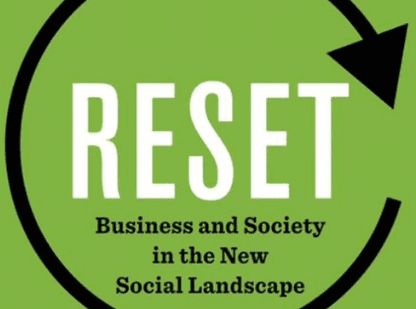

Here in the U.S. and across much of the globe, trust in most of our institutions is at an all-time low. This is especially true of business, due to the corporate scandals in the early 2000s followed by the fiscal crises a decade ago. Meanwhile, expectations that businesses can help solve our problems are stubbornly high. But the lightening pace at which information flows, along with the fact that so much of the conversation between stakeholders and businesses is occurring on social media, presents potential minefields for companies that can blow up at any time.
Nowadays, companies that relegate sustainability or corporate responsibility initiatives as stand-alone programs are at great risk of falling behind their competitors and losing consumers’ faith. Instead, understanding any potential impact that a company’s actions can have on stakeholders must be integrated within the core of a company’s strategy.
Thus is the viewpoint of the late James Rubin and Barie Carmichael in their book, Reset: Business and Society in the New Social Landscape, which will be published this week by Columbia Business School. Rubin was a member of the faculty at the University of Virginia Darden Graduate School of Business for more than two decades. Carmichael is a Batten Fellow at the Darden School and a senior counselor at the global communications consultancy APCO Worldwide. Her 35-year career in corporate communications has included stints as a partner at the Brunswick Group and Dow Corning’s corporate vice president and chief communications officer.
“In this new landscape, stakeholders have evolved from consumers of information to creators and movers of information,” the authors say in the book's introduction.
TriplePundit received a galley copy a few weeks before this week’s scheduled release. Crisply-written and laden with rich anecdotes of how companies have succeeded, and failed, when they have unwittingly found themselves in the spotlight after episodes have erupted on forums such as blogs, Twitter, Facebook - and in even what may seem quaint today, in email chains (as in the firestorm over a bug within Intel’s Pentium chip in 1994).
But the strength of this book does not lie in the listing of problems presented by declining trust manifesting itself in controversies erupting across social media. Rather, Rubin and Carmichael have written a playbook on how to navigate through this reality, while narrowing that gap between trust consumers have in companies juxtaposed against the expectations we often hoist upon them.
This new setting may be a painful transition for companies, which for decades were used to dealing with crises by hiding behind the twin shields of their communications and legal teams. But as the old saying goes, we are truly in an era when not words, but actions, are what matter. “Today, a company must prove its character through its actions at all levels of its stakeholder engagements,” the authors wrote in an article for the Darden School last month. “What a corporation does is the authentic content for what it says.”
So how can companies cope with this triple whammy of this new social ecosystem, the dramatic power shift in who controls this business narrative and a new generation of workers who are demanding far more from their employers than their parents and grandparents?
Each of the book’s seven chapters can stand alone as a guide that should be on bookshelves in every C-suite office. But of particular interest is the third chapter, which in a telephone interview with 3p and discussed intensively in Reset, is what Carmichael described as “Inherent Negatives.”
As Carmichael explained, the most successful and forward-thinking companies today have learned to adroitly manage both the ups and downs. Of course, no business can ever completely eliminate the negatives. But the strength of a company is how it can not only forecast and manage these challenges, but how they can even embrace such problems before they plunge a company in a public relations nightmare.
Take the example of UPS, which has been issuing annual corporate responsibility reports since that term even entered most of our vocabularies. The company’s inherent negative? Carbon emissions, carbon emissions and to be clear, carbon emissions. After all, while most of us know UPS for its iconic brown trucks, as much as 70 percent of its carbon footprint can be traced elsewhere across its massive transportation network.
For years, however, the logistics giant has done far more than reporting on its carbon footprint. UPS has been striving to integrate the tackling of its carbon footprint across its business model, leadership and corporate governance. The result has been efficiency initiatives such as ORION (On-Road Integration Optimization and Navigation), which has helped the company slash its fuel consumption and therefore, its emissions. And year after year, UPS makes the list of most trusted and reputable companies – no small feat for a carbon-intensive company.
And fundamentally, explained Carmichael during her interview with 3p, UPS addressed these challenges through the figurative windshield – not the rear-view window: i.e., the company boasts a culture of being proactive instead of reactive.
Another example of a company taking a more windshield approach to managing strategic risks is Diageo, which owns some of the most popular spirit brands worldwide. As outlined in Reset, Diageo goes above and beyond reminding consumers to “drink responsibly.” Instead, the company has integrated the mantra of responsible alcohol consumption into its corporate governance structure and what it calls its corporate marketing code. That code is reviewed every year to 18 months, and covers everything from marketing, packaging, R&D, customer training and engagement with organizations such as Mothers Against Drunk Driving (MADD). During the 2016 holiday season, Diageo even went so far as to launch a virtual reality experience that placed consumers in the front seat of a car involved in a drunk-driving crash – widely lauded as an industry first.
For any employee tasked with being in lockstep in this new and rapidly-changing business setting, Reset is essential reading. As Rubin and Carmichael conclude in their vivid 211-page work, “This new era’s ‘sweet spot’ is where the needs of the customer, business and society intersect. Businesses finding that sweet spot are building trust and meeting the rising expectations for business in the new social landscape.”
Image credit: Barie Carmichael